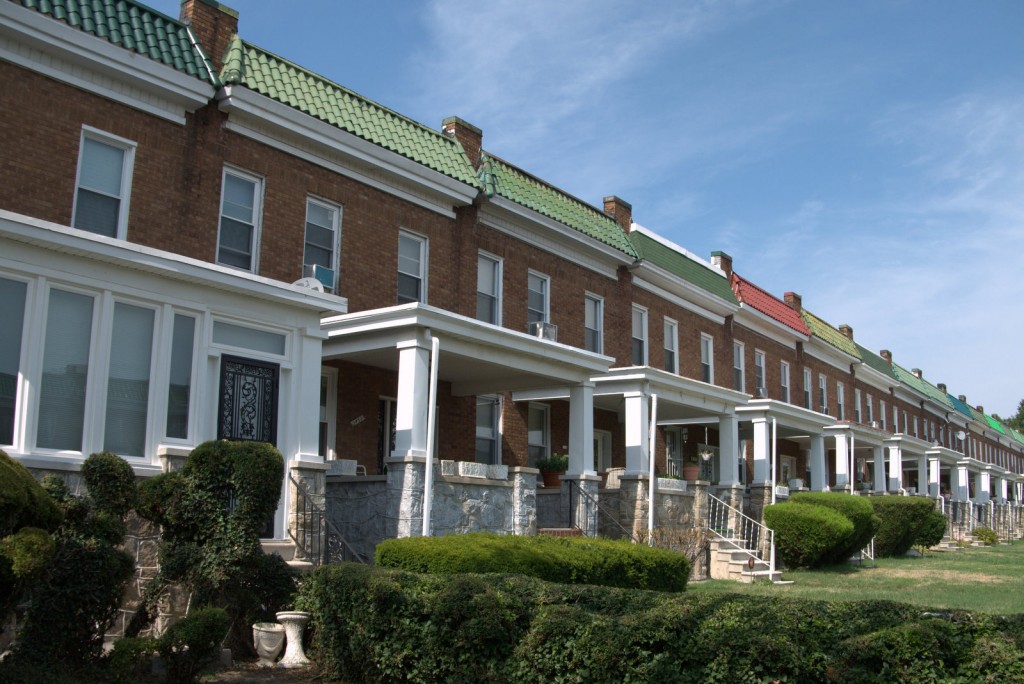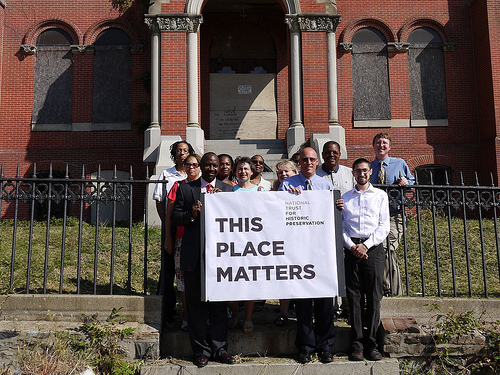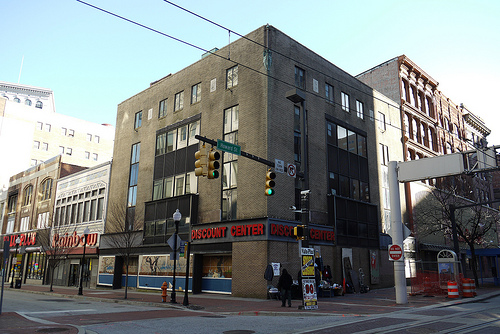Author: Eli
Eli Pousson started as a Field Officer at Baltimore Heritage in partnership with the National Trust for Historic Preservation in October 2009. Prior to moving to Baltimore, Eli worked for the DC Office of Historic Preservation and completed graduate work in anthropology and historic preservation at the University of Maryland College Park. Eli continues to work with the Lakeland Community Heritage Project and other heritage organizations in Prince George’s County, Maryland.

Good news for West Baltimore neighborhoods with designation of new Edmondson Avenue Historic District
We are thrilled to share the good news that the neighborhoods of Evergreen, Bridgeview/Greenlawn, and Rosemont Homeowners/Tenants have been listed to the National Register of Historic Places through the new Edmondson Avenue Historic District on December 27, 2010.
We appreciate the support we received from West Baltimore MARC TOD Transportation, Inc., the Alliance of Rosemont Community Organizations and the Evergreen Protective Association as we developed and submitted the nomination last year. We look forward to continuing our partnerships with neighborhood leaders and residents to help home-owners within the new historic district take full advantage of the city and state historic tax credits as they maintain and rehabilitation the handsome “daylight” rowhouses that make up the new district.
Baltimore’s Hebrew Orphan Asylum Past & Future on February 5
Baltimore’s Hebrew Orphan Asylum Past & Future
- Saturday, February 5, 2:00 to 3:00 PM
- Edmondson Avenue Branch Pratt Library
- 4330 Edmondson Avenue, Baltimore, MD 21229
Come out for a short talk on the history of one of West Baltimore’s grandest landmarks: the 1876 Hebrew Orphan Asylum. Generations of Baltimore residents may recall this building as Lutheran Hospital or West Baltimore General, but it began its history in 1876, built by the Hebrew Benevolent Society as a home for Jewish orphans and dependent children. This striking brick castle, designed by the German-born Edward Lupus and Baltimore-native Henry A. Roby, has endured over 130 years and is now the oldest Jewish orphanage building in the United States.
We’ll discuss history of the building and share a look at the efforts by Coppin State University and Baltimore Heritage to preserve and reuse it. The historic Hebrew Orphan Asylum building has great potential to anchor transit-oriented development around the future Rosemont Red Line light rail station. Eli Pousson, Field Officer with Baltimore Heritage in partnership with the National Trust for Historic Preservation, will lead the discussion. Mr. Pousson led the effort to nominate the building to the National Register of Historic Places and continues to work with Coppin State University and the new Friends of the Hebrew Orphan Asylum to support the revitalization of this tremendous Baltimore landmark.
Are you a member of the Friends of the Hebrew Orphan Asylum? Sign up for our e-mail list or donate $20 to Baltimore Heritage and support our efforts to save Baltimore’s Hebrew Orphan Asylum today!
Why the West Side Matters: Read’s Drug Store and Baltimore’s Civil Rights Heritage

One of the West Side’s least well known but most important stories is the history of the former Read’s Drug Store at Howard and Lexington Streets and its landmark role in Baltimore’s civil rights movement. Built in 1934 by Baltimore architects Smith & May, the press heralded this Art Deco structure as a local landmark from its beginning– a modern flagship store for the Read’s chain, continuing their 50-year presence at the bustling heart of the downtown retail district.
Like many downtown commercial establishments in the early 1950s, the Read’s chain maintained a strict policy of racial segregation at their lunch counters. In 1955, a group of Morgan State students came together with the leadership of the recently organized Baltimore Committee on Racial Equality to organize a sit-in protest at the lunch counter of the Read’s Drug Store at Howard and Lexington Streets. They succeeded in this effort, marking this building as a witness to the first successful student-led sit-in protest in Baltimore and defining a powerful model for the more famous lunch-counter sit-in of Greensboro, North Carolina in 1960. This building is currently threatened with total demolition by the proposed development of the Superblock by the Baltimore Development Corporation and Lexington Square Partners. Baltimore Heritage, together with partners and supporters from across the city, is advocating for the city to reconsider this proposal and encourage the preservation and re-use of this essential landmark in Baltimore’s civil rights history.
Our year exploring new places at Baltimore Heritage
You probably know already that this has been a big year for Baltimore Heritage. We brought hundreds of people out to 37 historic buildings and neighborhoods across the city and spent countless hours on research, documentation, and advocacy in neighborhoods including Ridgely’s Delight, Lafayette Square, Fell’s Point, and Downtown’s West Side.
One of this year’s most exciting programs was our fall series on Race and Place in Baltimore Neighborhoods with leaders and scholars in Upton, Greater Rosemont, and Sharp Leadenhall. In Greater Rosemont, we worked closely with members of the Evergreen Protective Association and Dr. Ed Orser from UMBC. Our group met regularly over the summer to discuss the history of the neighborhood and plan a route for our walking tour. When the event finally arrived on October 23, we had an incredible turnout of over 55 people joining us for a tour and staying for a discussion that linked the area’s complicated past to its future revitalization around the Red Line light rail corridor.
We repeated the tour a few days before Thanksgiving with a more modest turnout of 20 people–who still helped to make the last day of the West Baltimore Farmer’s Market a great success as they stocked up on fruits and vegetables for the holiday meal. That afternoon, I received one of the kindest remarks that I heard all year-
“Like all of Baltimore Heritage tours I find myself exploring new places (or old places in a new way) and gaining a deeper understanding of the City. The memory of this tour will carry over to my Thanksgiving meal, and the wonderful fall and winter crops I picked up at the West Baltimore farmer’s market. A wonderful reminder of my own pilgrimage on a warm Saturday morning in November.”
I know that our work matters to my friends and colleagues in West Baltimore and to people across the city. On the last day of the year, please support our work with a small donation of $35, $50, or anything that works well for you. Thank you very much for your generous support and have a happy New Year!




